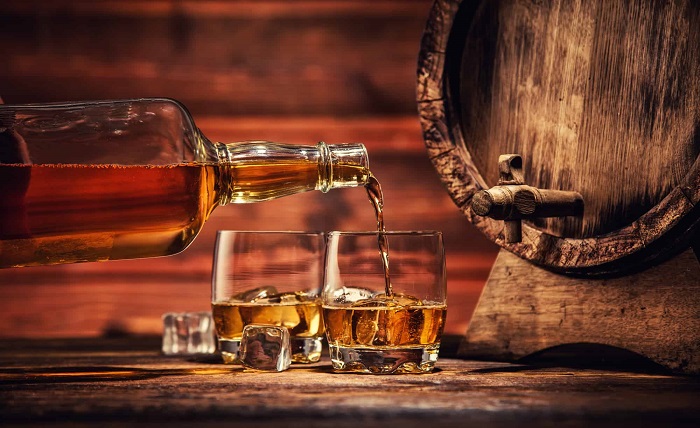
Whisky is a spirit made from fermented grain mash. The type of grain used, the quality of the water, and the climate all play a role in the flavor of the final product. Whiskies produced in different regions can taste noticeably different from one another.
If you ask experts who know more about buy whiskies online, they will highlight that Scotch whisky is made in Scotland, and must be aged in oak barrels for at least three years. The climate in Scotland is cooler and wetter than in other whisky-producing regions, which contributes to the distinctively smooth flavor of Scotch.
- Irish whiskey must be made in Ireland and aged for a minimum of three years. The cooler climate results in a lighter flavor than Scotch whisky.
- American whiskey can be made from any type of grain, but most commonly uses corn. It must be aged in new, charred oak barrels for at least two years. The warmer climate results in a bolder flavor than Scotch or Irish whiskey.
- Japanese whisky must be made entirely in Japan, using Japanese ingredients. The quality of the water is crucial to the flavor of Japanese whisky, as it contributes to the smoothness of the final product.
Regional Variations in Whisky Production
Whisky production varies significantly from region to region. The type of grain used, the climate and the water all contribute to the final product.
- In Scotland, whisky is typically made with barley. The climate is cool and moist, which helps to give the whisky its characteristic smoothness. The water used in Scots whisky production is soft and peaty, which also contributes to the flavor.
- In Ireland, whisky is usually made with Irish barley and wheat. The climate is milder than Scotland, which gives the whisky a lighter flavor. The water used in Irish whisky production is also softer than in Scotland, contributing to the smoothness of the final product.
- In Japan, whisky is often made with rice or wheat. The climate is much warmer than in Scotland or Ireland, resulting in a more robust flavor. Japanese whiskies also tend to be higher in alcohol content than their Scottish or Irish counterparts.
Scotland
Scotland: Often considered the home of whisky, Scottish whiskies are typically distilled twice and made with malted barley. The water used in production is often peaty, which contributes to the smoky flavor that is characteristic of many Scottish whiskies.
Ireland
Ireland is home to some of the most well-known and loved whiskies in the world, including Jameson, Bushmills, and Redbreast. Irish whiskey is typically distilled three times, which results in a spirit that is smooth and easy to drink. The use of peat smoke during the drying process imparts a unique flavor to Irish whiskey that is often described as earthy or smoky.
While Scotch whisky must be aged for a minimum of three years in oak barrels, there is no such requirement for Irish whiskey. This allows producers to release younger whiskies that are lighter in body and flavor. Many Irish whiskies are triple-distilled, which further contributes to their signature smoothness.
The island of Ireland has a long history of whiskey production, dating back to the early 1400s. Today, there are over 30 active distilleries across Ireland, producing a wide range of whiskeys that are enjoyed by fans all over the world.
Japan
There are a few regional variations in whisky production in Japan. The most notable difference is the climate. The climate in Japan is much cooler than in other whisky-producing countries, which gives the whisky a different flavor profile. Japanese whisky is also typically made with a higher percentage of malt, which gives it a more robust flavor. Another difference is that Japanese whisky is often distilled using pot stills, while other countries use column stills. This results in a more full-bodied and complex flavor. Japanese whiskies are often aged for longer periods of time, which allows them to develop deeper and more intricate flavors.
United States
Whisky production in the United States has a long and storied history dating back to the 18th century. American whiskey is typically made from a mash of grain, which is then distilled and aged in oak barrels. The most common grains used in whiskey production are corn, rye, wheat, and barley.
There are several different styles of American whiskey, including bourbon, rye, Tennessee whiskey, and blended whiskey. Bourbon is made from at least 51% corn and must be aged in new charred oak barrels. Rye whiskey must be made from at least 51% rye grain and also must be aged in new charred oak barrels. Tennessee whiskey is a type of bourbon that is produced in the state of Tennessee and must be filtered through sugar maple charcoal before being aged in new oak barrels. Blended whiskey is made from a combination of two or more different types of straight whiskeys.
American whiskeys are often characterized by their smoothness and sweetness. The climate in the United States also plays a role in the flavor profile of American whiskeys, as the warmer weather accelerates the aging process, resulting in deeper and richer flavors.
Taste Profiles of Different Whiskeys from the Different Regions
- There are four main whisky-producing regions in Scotland: Highland, Lowland, Islay, and Speyside. Each region has its own distinct taste profile that is influenced by the local climate, geography, and water source.
- Highland whiskies are typically full-bodied with a strong flavor. The climate is cool and harsh, which gives the whisky a unique character. The water sources in the Highlands are high in peat content, which also contributes to the bold flavor of these whiskies.
- Lowland whiskies are lighter in body and flavor than their Highland counterparts. The climate is milder and the water sources are lower in peat content, resulting in a smoother taste.
- Islay whiskies are known for their smoky flavor due to the high peat content in the local water sources. These whiskies are also full-bodied with a strong flavor.
- Speyside whiskies are typically light-bodied with a delicate flavor. The climate is mild and the water sources are low in peat content, making for a smooth and easy-drinking whisky.
Tips on How to Best Enjoy a Whisky from a Specific Region
There are many different types of whisky, and each region has its own unique way of producing it. Here are some tips on how to best enjoy a whisky from a specific region:
- Scotch whisky: Scotch whisky is typically made with peated malt, which gives it a smoky flavor. It is best enjoyed neat or with a splash of water.
- Irish whiskey: Irish whiskey is usually lighter and smoother than Scotch whisky. It can be enjoyed neat, on the rocks, or mixed in cocktails.
- Japanese whisky: Japanese whisky is often described as being similar to Scotch whisky, but with a more delicate flavor. It is best enjoyed neat or with a splash of water.
- Canadian whisky: Canadian whisky is typically lighter and sweeter than other whiskies. It can be enjoyed neat, on the rocks, or mixed in cocktails.
Conclusion
Whisky production is an art form that has been honed over centuries, resulting in a wide range of regional variations. In Scotland, whisky can be divided into five distinct regions – Lowland, Speyside, Highland and Islay – each with its own unique flavor notes that make it stand out from the rest. Further afield there are other countries like Japan and India who have their own take on whisky production that add to the diversity of this wonderful spirit. No matter what your preference may be, there’s sure to be a whisky made somewhere in the world just for you!




